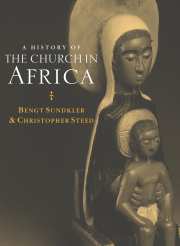Book contents
- Frontmatter
- Contents
- List of maps
- Acknowledgements
- List of abbreviations
- Introduction
- PART I THE FIRST FOURTEEN HUNDRED YEARS
- PART II THE MIDDLE AGES 1415 – 1787
- PART III THE LONG NINETEENTH CENTURY 1787 – 1919
- PART IV THE COLONIAL EXPERIENCE 1920 – 1959
- 11 Continental Panoramas
- 12 Local Perspectives
- 13 North and North-Eastern Africa
- 14 West Africa
- 15 Central Africa
- 16 Southern Africa
- 17 Eastern Africa
- PART V INDEPENDENT AFRICA 1960 – 92
- Notes
- Bibliography
- Name index
- Subject index
11 - Continental Panoramas
from PART IV - THE COLONIAL EXPERIENCE 1920 – 1959
Published online by Cambridge University Press: 16 September 2009
- Frontmatter
- Contents
- List of maps
- Acknowledgements
- List of abbreviations
- Introduction
- PART I THE FIRST FOURTEEN HUNDRED YEARS
- PART II THE MIDDLE AGES 1415 – 1787
- PART III THE LONG NINETEENTH CENTURY 1787 – 1919
- PART IV THE COLONIAL EXPERIENCE 1920 – 1959
- 11 Continental Panoramas
- 12 Local Perspectives
- 13 North and North-Eastern Africa
- 14 West Africa
- 15 Central Africa
- 16 Southern Africa
- 17 Eastern Africa
- PART V INDEPENDENT AFRICA 1960 – 92
- Notes
- Bibliography
- Name index
- Subject index
Summary
THE COLONIAL STATE
The years 1920 to 1960 are characterized by the transition from a colonial period to that of the Independent African state. Functioning in this context the churches were conditioned, sometimes marked, by this political frame-work. A few brief paragraphs must here serve to indicate, from the point of view of the churches, this signature of the period.
The British
In the 1920s the British established a relationship between administration and population through the system of Indirect Rule, thus ensuring the continued role of the chief. This system had been conceived by Lord Lugard while working in northern Nigeria with emirs and other prominent chiefs. The British administration was to exert its influence through the chiefs, a system that was kept in force until the 1950s. A country which experienced a prominent application of this system was Tanzania. Both Catholics and Protestants had to adapt themselves to the practice of Indirect Rule while it could work out differently depending on whether the chief was Catholic or Protestant: in principle this denominational difference was not supposed to tell but in practice the priest/pastor or missionary found that a Catholic or Protestant chief would react differently to a request for a school and church site according to his denominational affiliation.
The church in nineteenth-century Africa was dominated by the catechist-teacher.
- Type
- Chapter
- Information
- A History of the Church in Africa , pp. 608 - 658Publisher: Cambridge University PressPrint publication year: 2000



